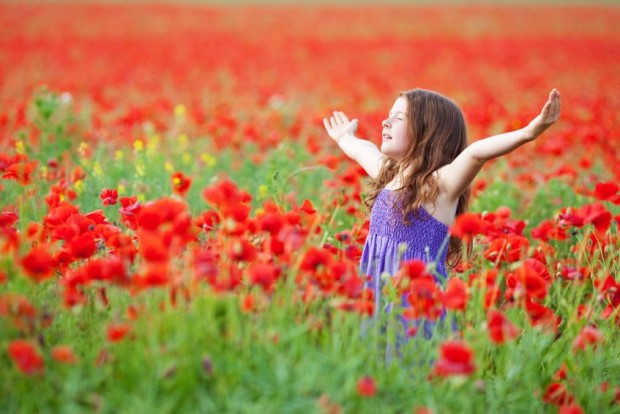
From morning till night, kids are told what they can and cannot do, leaving them feeling fairly powerless. For children to become conscious, confident, caring adults, they need to know that they can effect change and that they can make a positive impact on someone else’s life. What follows are the stories of two children who, empathizing with the tragic plight of children their age living on the other side of the globe, decided to do something. I include their stories not because we should all try to raise children who launch humanitarian movements, but to encourage you to stretch your imagination when you think about helping your children tune in to what stirs them, so they can manifest who they are uniquely meant to be.
Seeing a photograph of two little boys living in slavery prompted eight-year-old Vivienne Harr to do something. She decided she was going to raise money by running a lemonade stand nonstop, for 365 days straight, rain or shine. Her goal was to raise $100,000 to help put an end to child slavery. On day
fifty-two, Nicholas Kristof from the New York Times showcased Vivienne, and “her moment became a movement.” She reached her goal, contributing $101,320 to Not For Sale, a leading antislavery organization.
“When her parents said: “You did it, honey. You’re done,” Vivienne said: “Is child slavery done?” They shook their heads. “Then I am not done.” Vivienne, now ten, has catalyzed a movement by starting the organization Make a Stand, “a social impact brand that supports its 10-year-old founder’s vision of a world where all 18 million enslaved children are free and safe.” When asked, “What advice would you give to kids who have dreams like you but aren’t sure they can do it?” Vivienne replied, “If you set your heart to it, you can do it. I promise: you don’t have to be big or powerful to change the world. You can be just like me.”
Vivienne’s parents could have explained to her that while her sentiments were sweet, child slavery was a complicated, grown-up problem. But they didn’t. They raised their daughter in a household that valued kindness and concern for others. (Vivienne’s mission started because her mother had been deeply touched by photographs of enslaved children at a gallery opening.) From there, they simply buoyed their daughters desire to make a difference.
Free the Children is an international charity that has galvanized more than two million young people to take practical steps toward making the world a better place. It started in 1995 when Craig Kielburger happened on a news article about a young boy in Southeast Asia who had been sold into slavery at the age of four and subsequently spent six years chained to a carpet-weaving loom. Media coverage of Iqbal’s story came to the attention of those wanting to silence Iqbal, and he lost his life at the age of twelve for speaking out about the rights of children. When Craig read Iqbal’s story, he pulled together a group of his classmates to found Free the Children. He was twelve years old at the time; his classmates were his fellow seventh-graders.
Kids cannot buy a ticket to We Day, an energizing all-day event for teens born out of Free the Children that takes place in fourteen cities; instead, they earn their way through service. Tens of thousands of youth and supporters do so every year. Speakers have included Archbishop Desmond Tutu, Dr. Jane Goodall, Jennifer Hudson, and Magic Johnson. Young people involved with We Act have contributed 14.6 million hours of volunteer service. Long-term studies have found that 80 percent of alumni from these programs volunteer more than 150 hours a year, 83 percent give to charity, and a staggering 79 percent voted in the last Canadian federal election in 2011 (compared to 58 percent overall).
I hope these stories inspire you to look for ways to involve your children in kid-friendly groups like We Day and Make a Stand. So many youngsters suffer from a sense of aimlessness. They need parents to help them take part in activities that inspire them to step outside their comfort zone and find a sense of purpose, while having fun with their peers. Every child comes into the world with a compassionate nature. Volunteering offers them the chance to experience a sense of meaning when they care for someone else.
Show your children how to give with both hands without asking for anything in return. Involve them in cooking dinner for a housebound neighbor, and let them deliver it. Help out with dog washing at an animal shelter. Participate in park cleanups. Help weed the garden at your local school. Take part in a charity marathon, cheering from the sidelines. You can find many age-appropriate volunteer opportunities at www.volunteermatch.org. Maria Shriver titled one of her blog posts “We’re in Need of a Social Kindness Movement.” Her moniker? Scatter kindness. Please do.
Excerpted from the book Parenting with Presence: Practices for Raising Conscious, Confident, Caring Kids ©2015 by Susan Stiffelman. Printed with permission of New World Library. www.newworldlibrary.com



